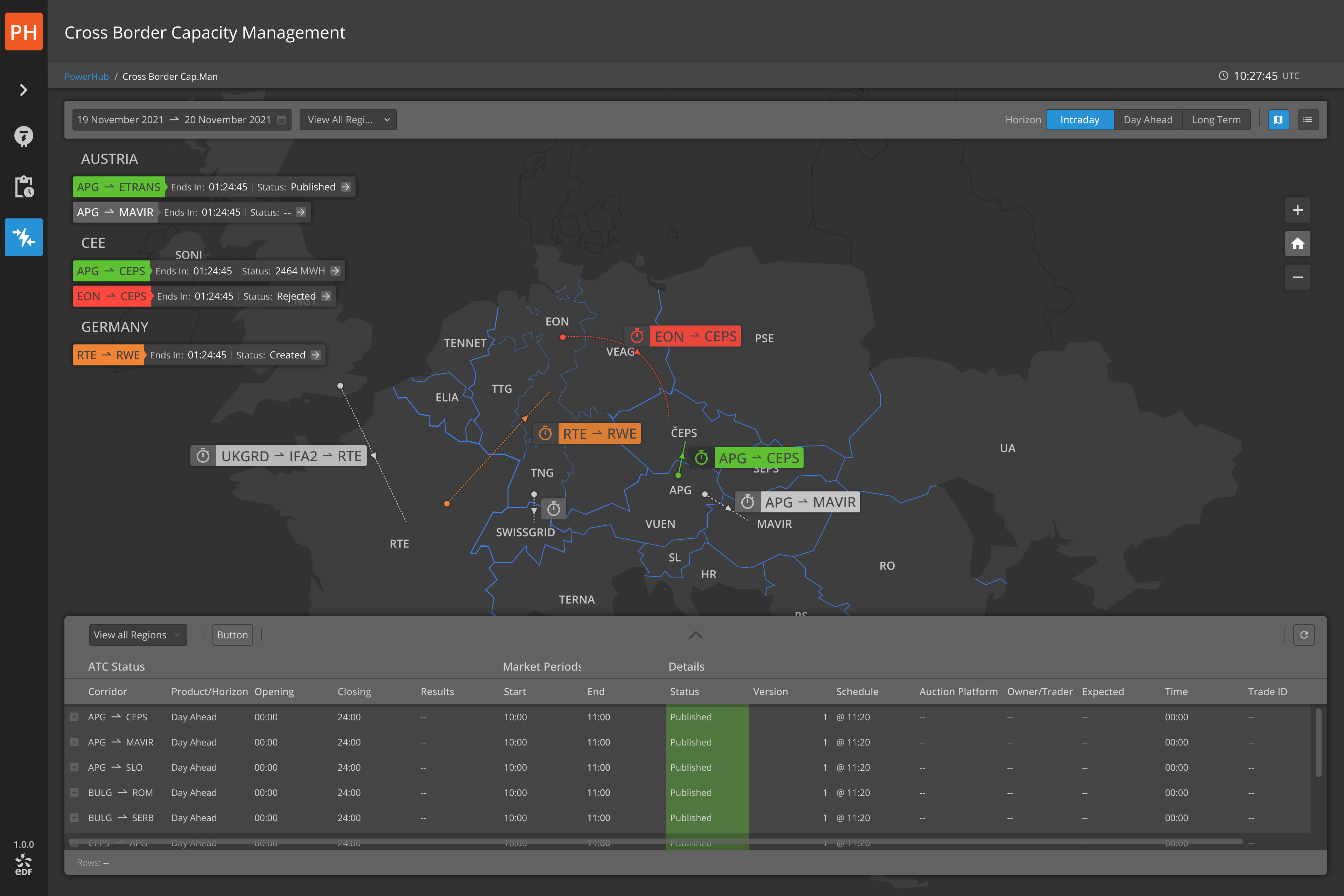As part of the Power Operations transformation program I worked hand-in-hand with the product team to realise an end-to-end user experience strategy — sunsetting several legacy position tracking processes & monitoring tools.
For EDF Trading, this meant operating under higher volumes, tighter deadlines, and stricter compliance requirements — all while relying on outdated, disconnected systems.
Power Up
Electricity trading is booming. EEX reported a 43% increase in overall power trading volume in 2024, with futures trading up 37% in early 2025. A major driver is the migration from OTC to regulated markets.
24/7 Algorithmic and AI-powered energy trading is surging, especially as firms leverage real-time weather price, and grid data to optimise trading strategies.

The Challenge
Complexity, Pressure, and Risk
Electricity trading accelerated through 2024, while EU regulations move the market toward 15-minute product granularity by late 2025. For EDF Trading, higher volumes, tighter deadlines, and stricter compliance intersected with disconnected legacy tools..
Operators juggled three separate systems, Excel, and emails to confirm a single cross‑border flow. If any field was missed, batches could be rejected before gate closure¯leading to imbalance charges and long nights.
“At 2:15 a.m., I'd be copying data between spreadsheets and an old scheduling tool while refreshing a regulator portal. If anything went wrong, I had 10 minutes to fix it before penalties kicked in.” — Senior Operator, Power Desk
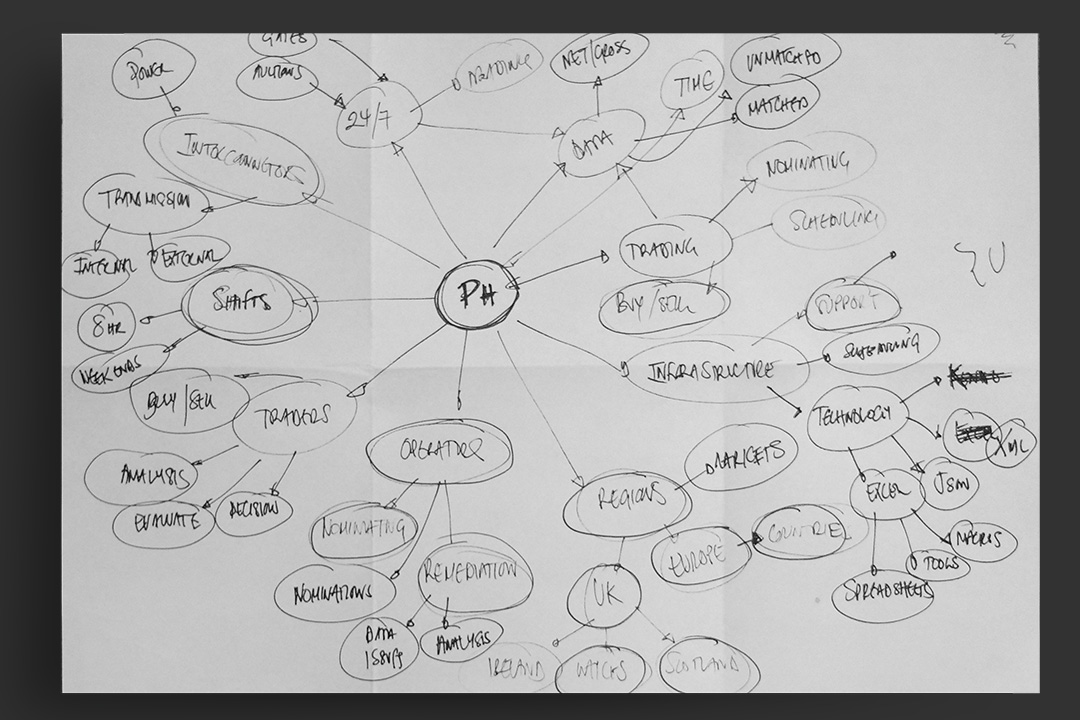
Our Approach
Designing for People, Not Just Processes
We didn’t set out to simply digitise existing workflows. Our mission was to simplify, automate, and empower teams, creating a unified system that scaled with growing complexity while improving the daily experience for Supervisors, Operators, and Traders.
Co-Design with Users
From day one, operators and supervisors were active partners in the process: Workshops and shadowing sessions uncovered the hidden pain points behind manual tasks.
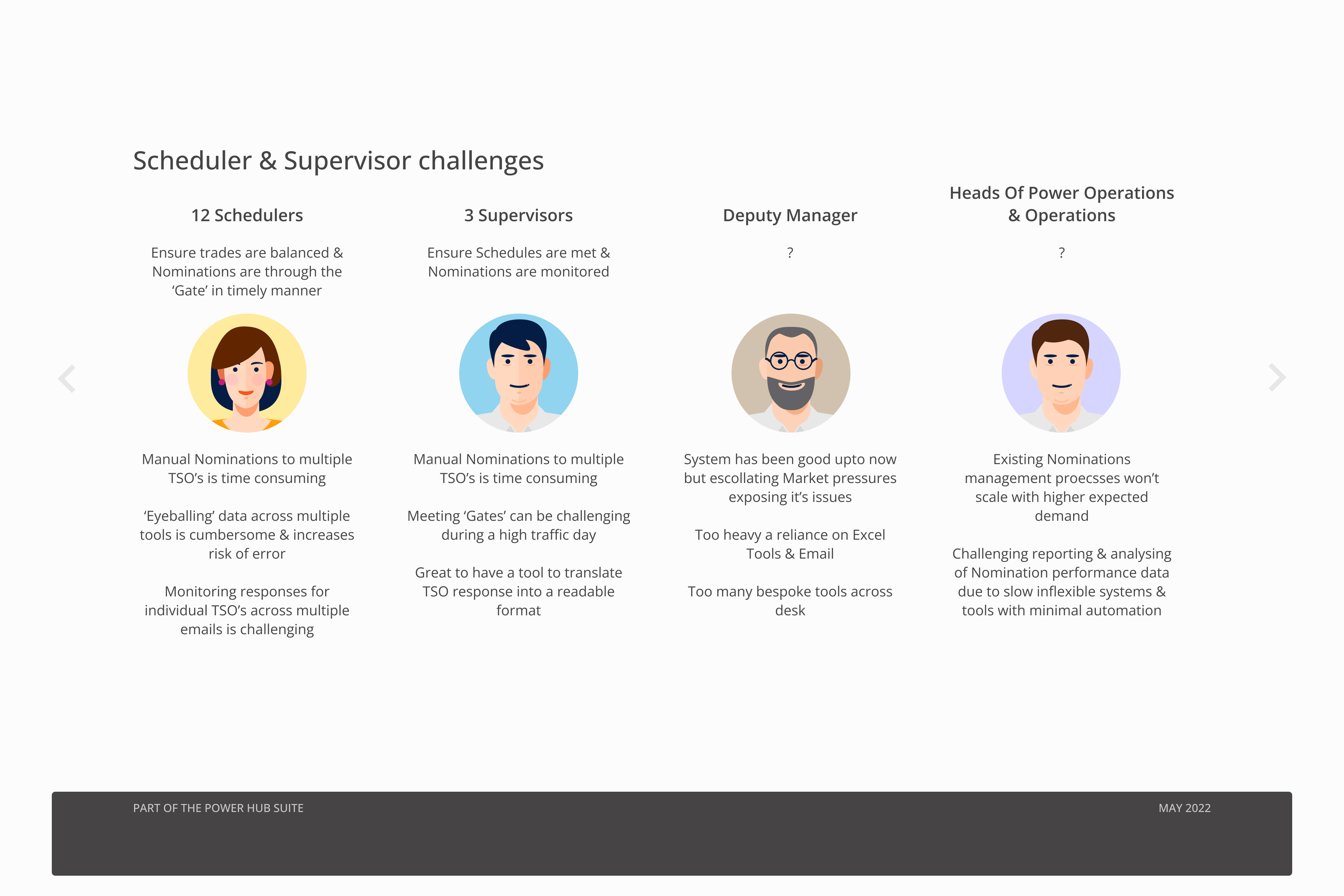
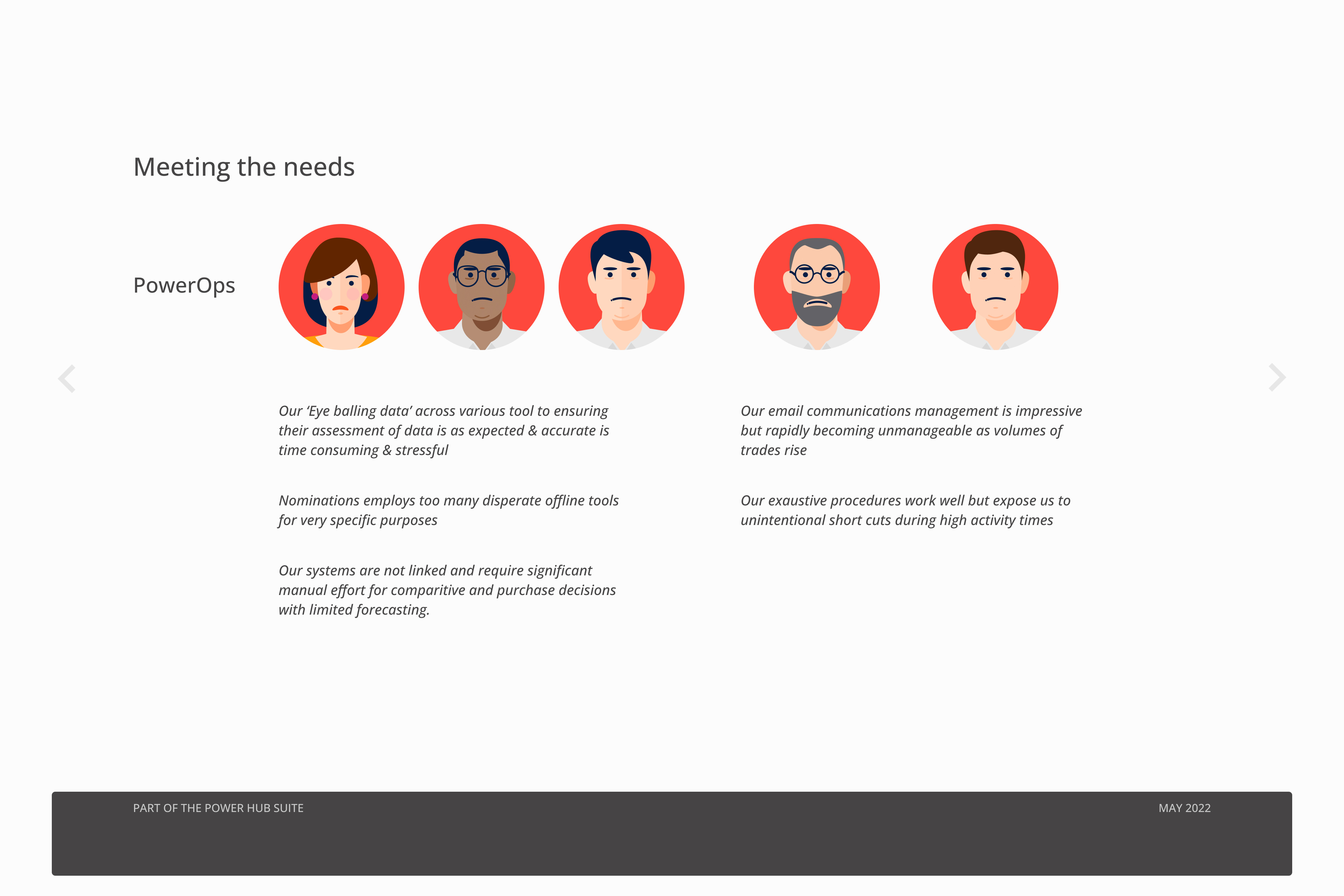
Sandbox environments allowed users to test new features safely, building confidence and reducing resistance to change.
Weekly sprint demos ensured the solution evolved in step with real-world needs.
Solution Overview
A Phased Transformation
Phase 0—Understanding Content & Worflows
- • Large data set to manage using single use tools.
- • Working across shifts needs constant review of processes.
- • Errors need to be exposed early and efficiently resolved.
“Shifts are pressured — there’s usually a problem and it alway makes nominating on time stressful — slow data retrieval, cut and paste, refreshing every-time.” — Operator, Intraday Desk
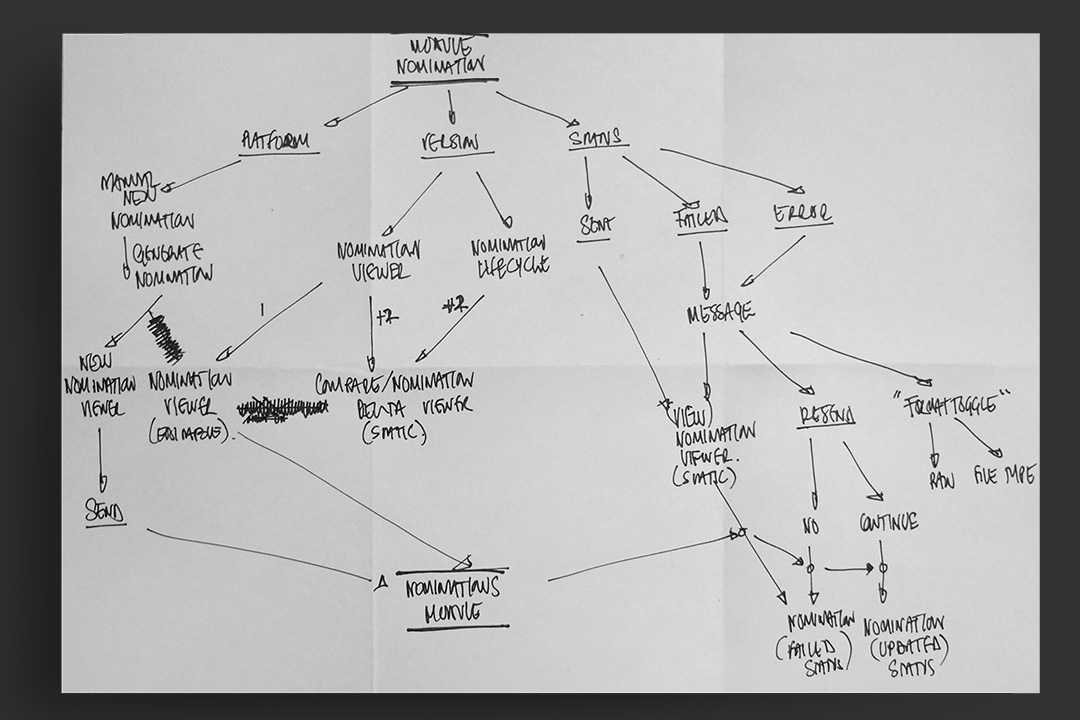
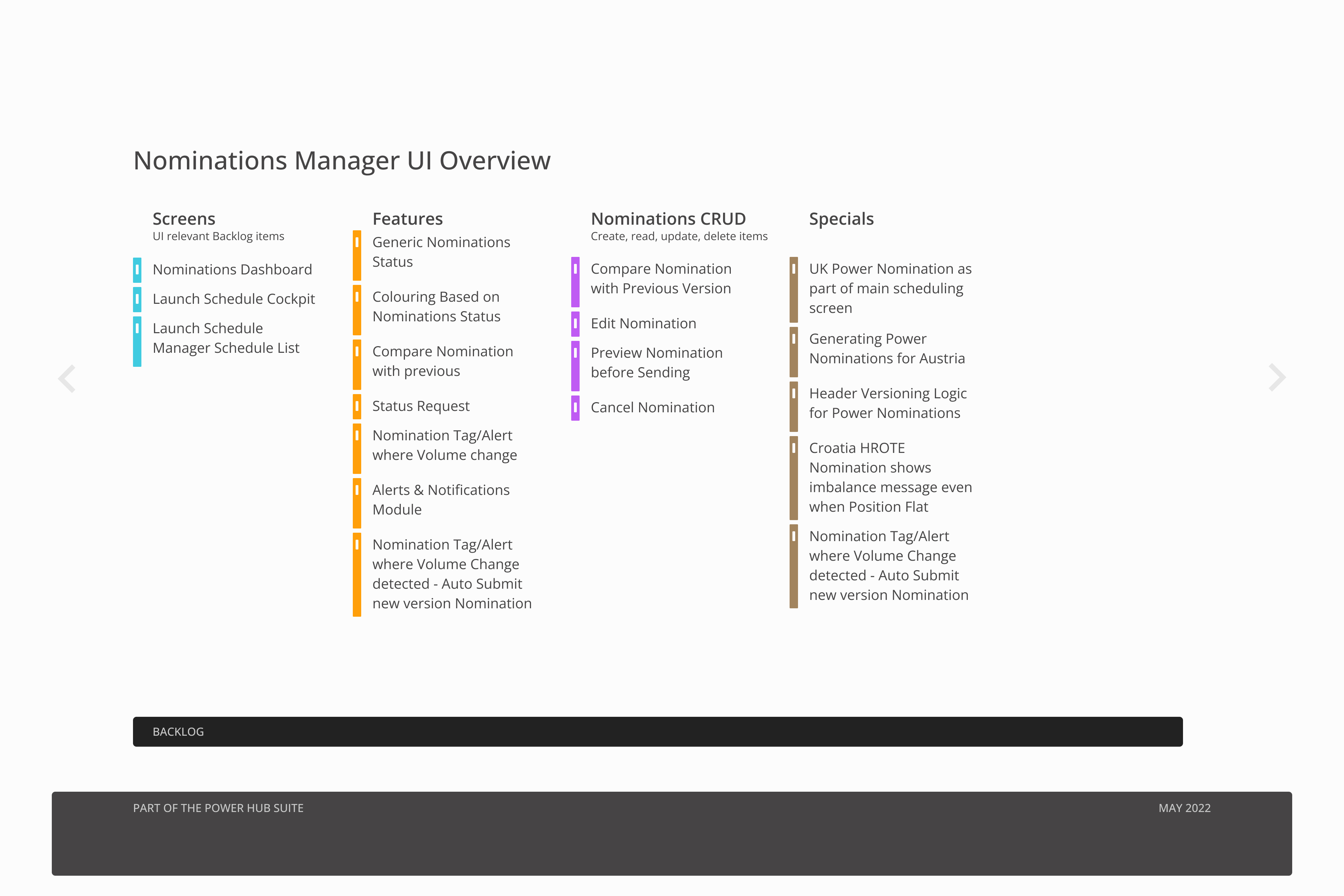
This project wasn't just about technology — it was about changing how people work, reducing stress, and enabling EDF Trading to meet the challenges of a dynamic energy market.
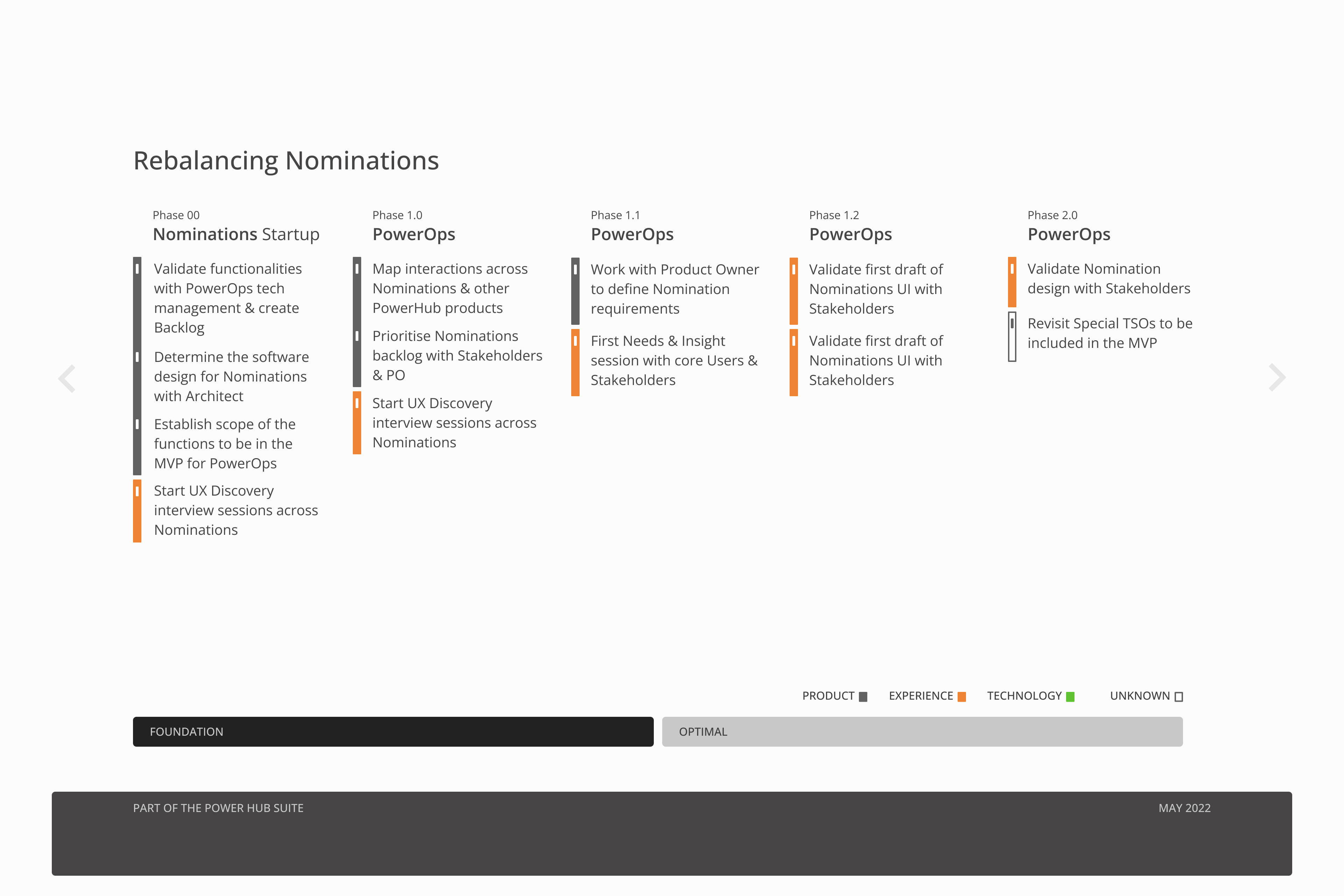
Phase 1—Live Position Management
- • 24-hour live dashboard for intraday and day-ahead positions in one interface.
- • Progressive data views enable drill-down from region to specific trades.
- • Instant visual cues flag imbalances and anomalies before penalties occur.
“Before, I’d spend half my shift just trying to understand our position. Now, I can see everything in one view — and act on problems immediately.” — Operator, Intraday Desk
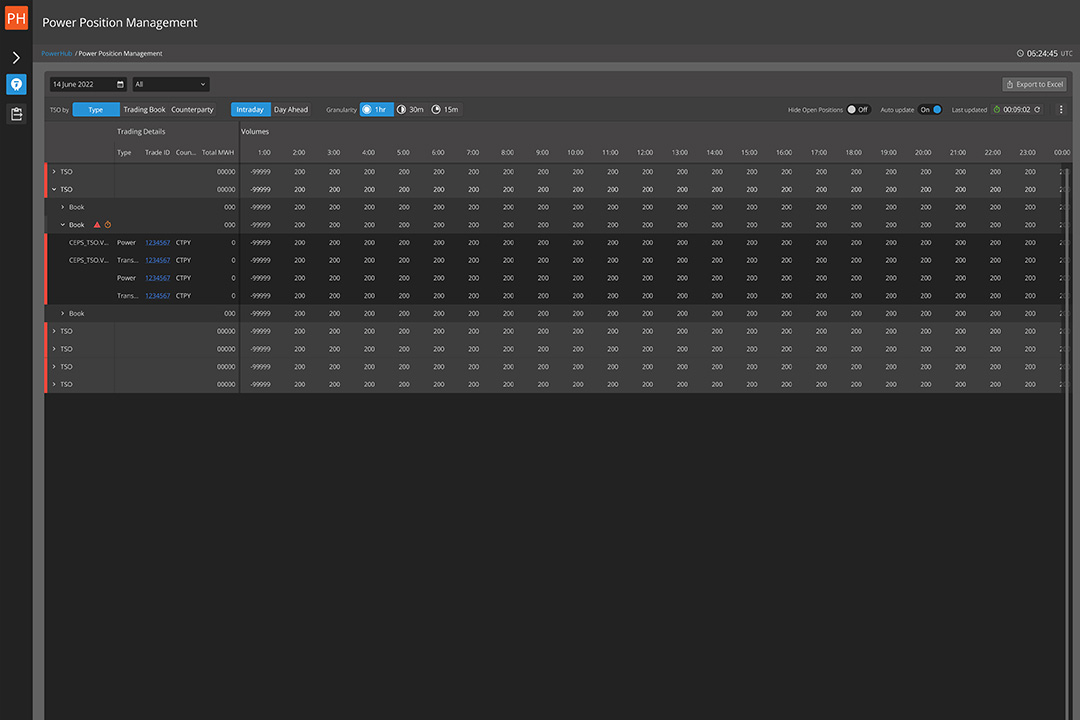
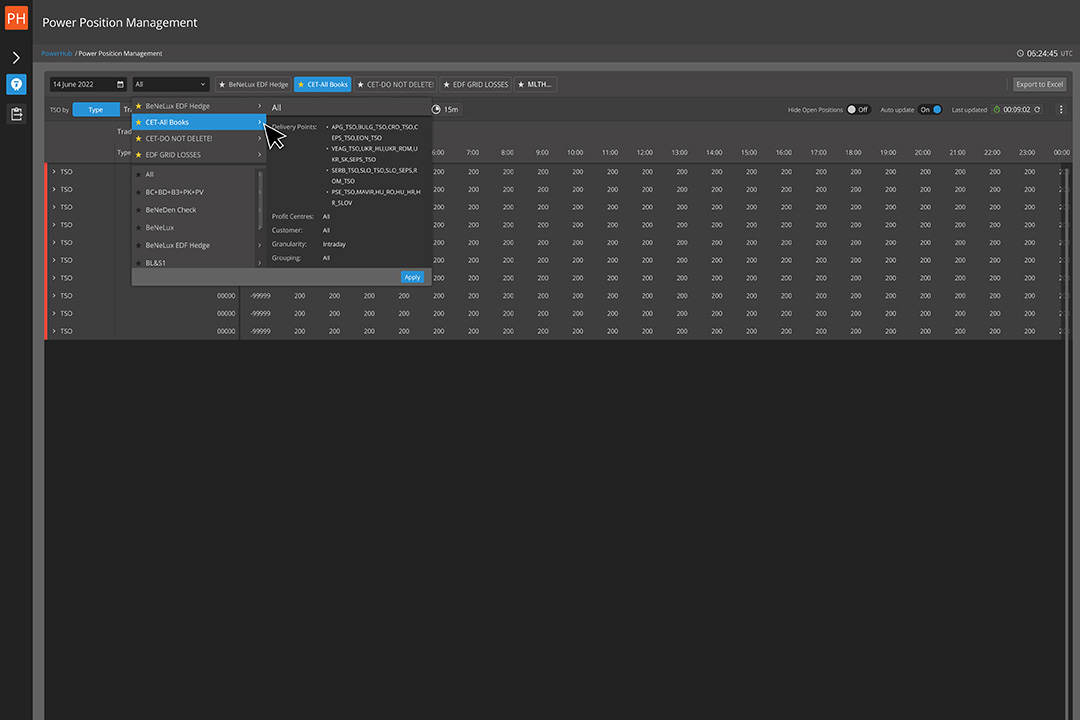
Phase 2—Nominations Automation
- • Direct integration with TSO and counterparty APIs automated over 75% of nominations.
- • Real-time status tracking across each batch; operators intervene only for issues.
- • Prioritised alerts reduce noise and focus attention on the most urgent items.
“Now, my team focuses on the issues that matter most, instead of getting lost in hundreds of alerts.” — Supervisor, Cross-Border Operations
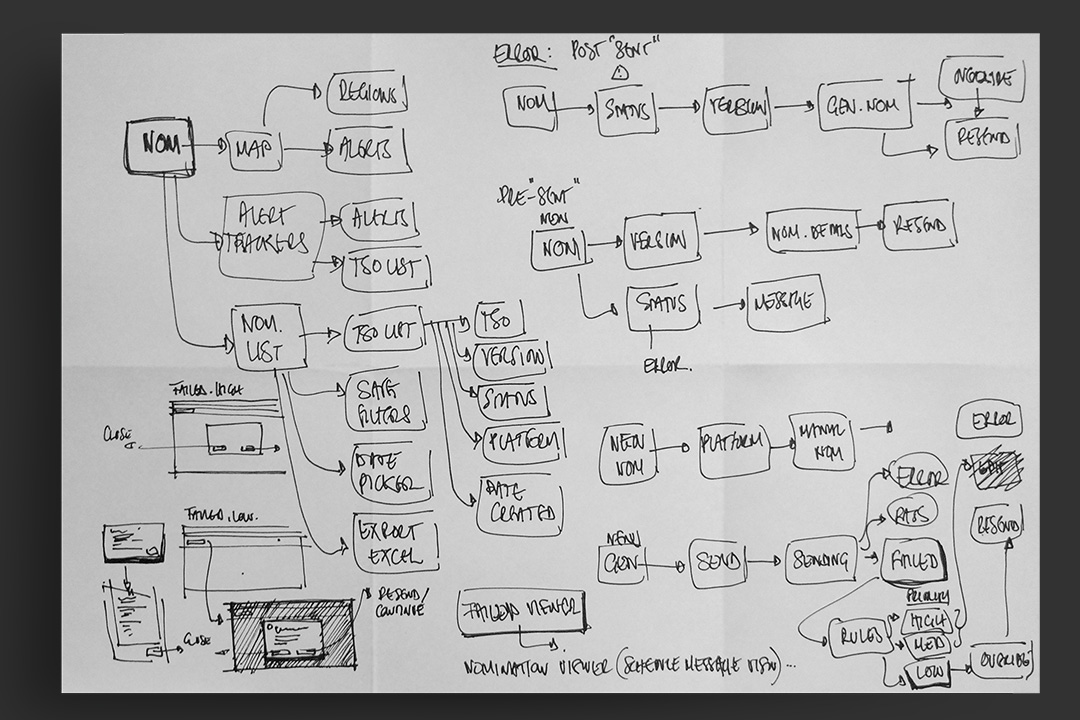
Nominations were the biggest operational bottleneck, with 80% manually entered before this initiative.
By ratinalising workflow and integrating directly with TSO and counter-party APIs, we automated over 75% of nominations:
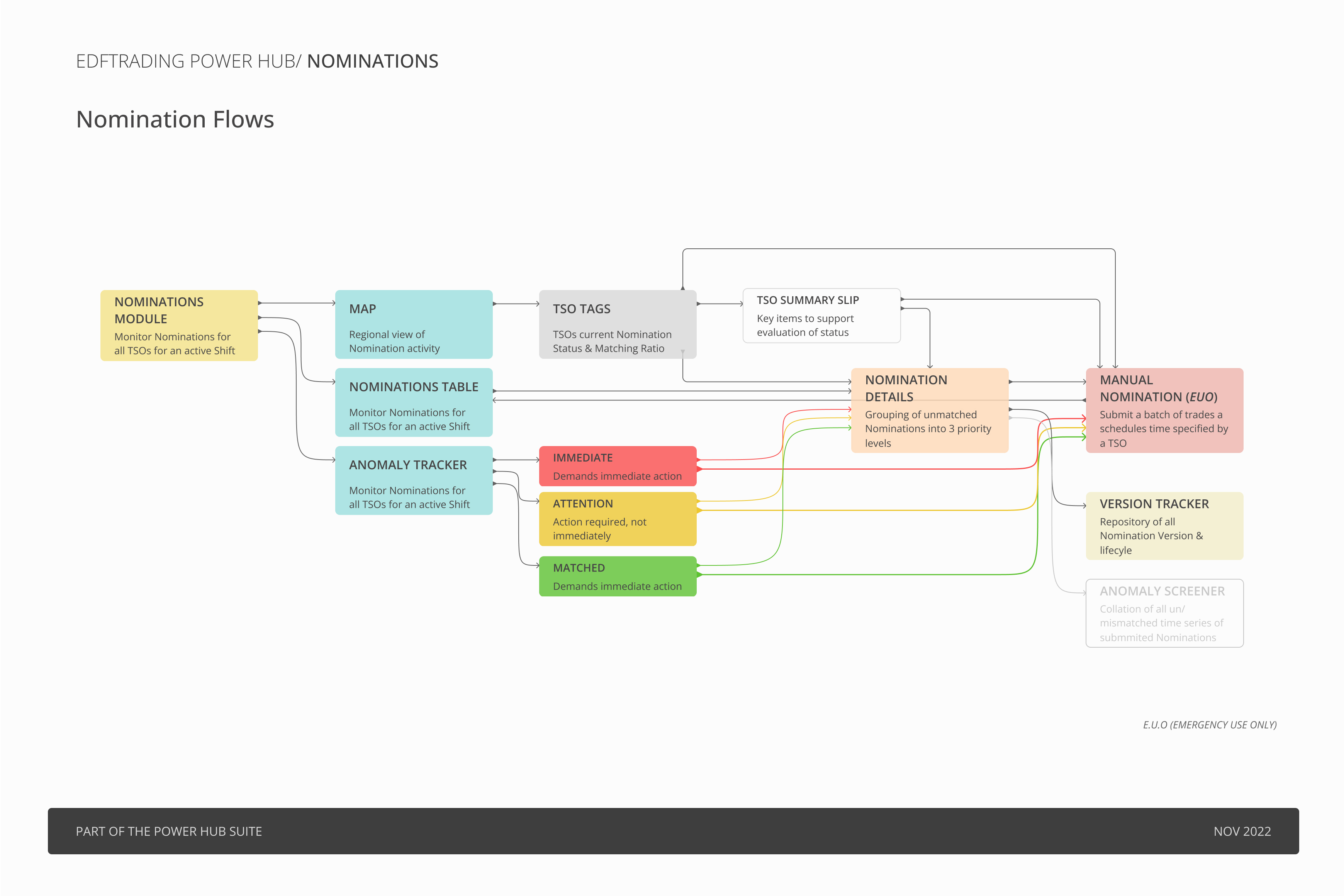
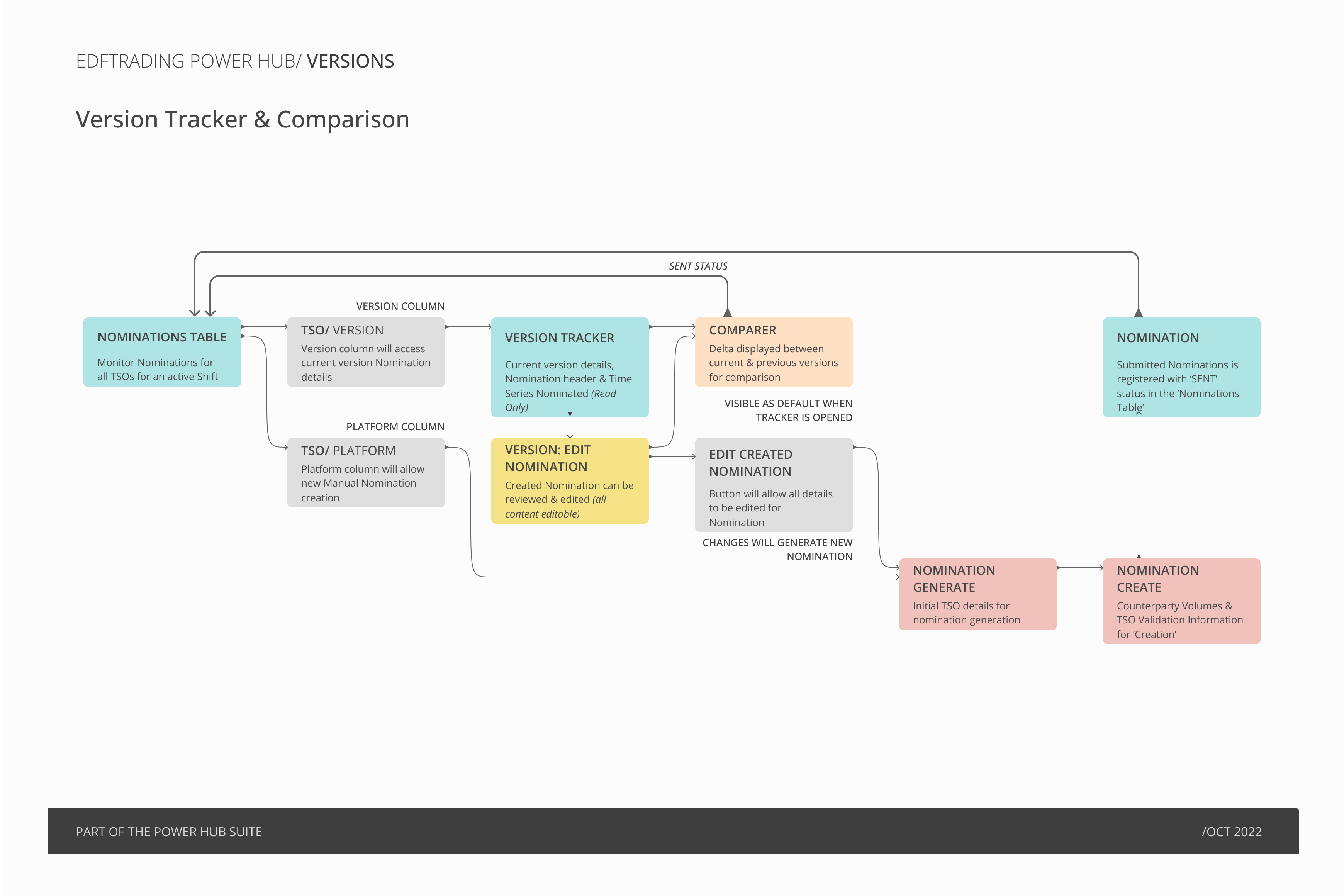
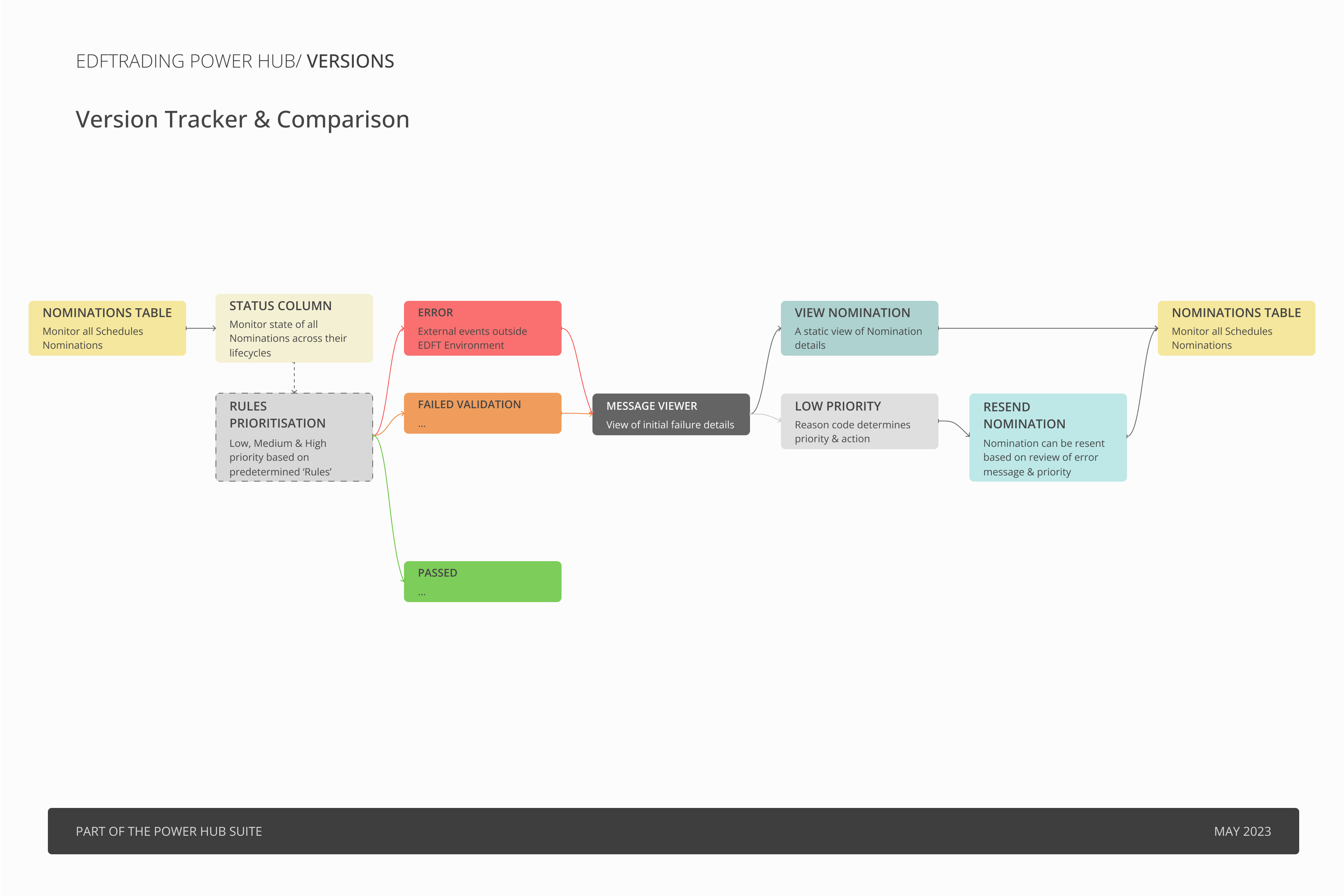
Design Decisions
Balancing Scale, Speed, and Clarity
High-Volume Data Handling
Challenge: Operators needed to view thousands of data points across multiple dimensions—positions, flows, counter-parties, and time windows—without slowdowns.
Decision:
Use AG Grid for large, dynamic datasets; enable fast filter/sort/aggregate and hierarchical views for progressive disclosure.
Why it matters:
Prevents information overload and maintains performance at peak times.
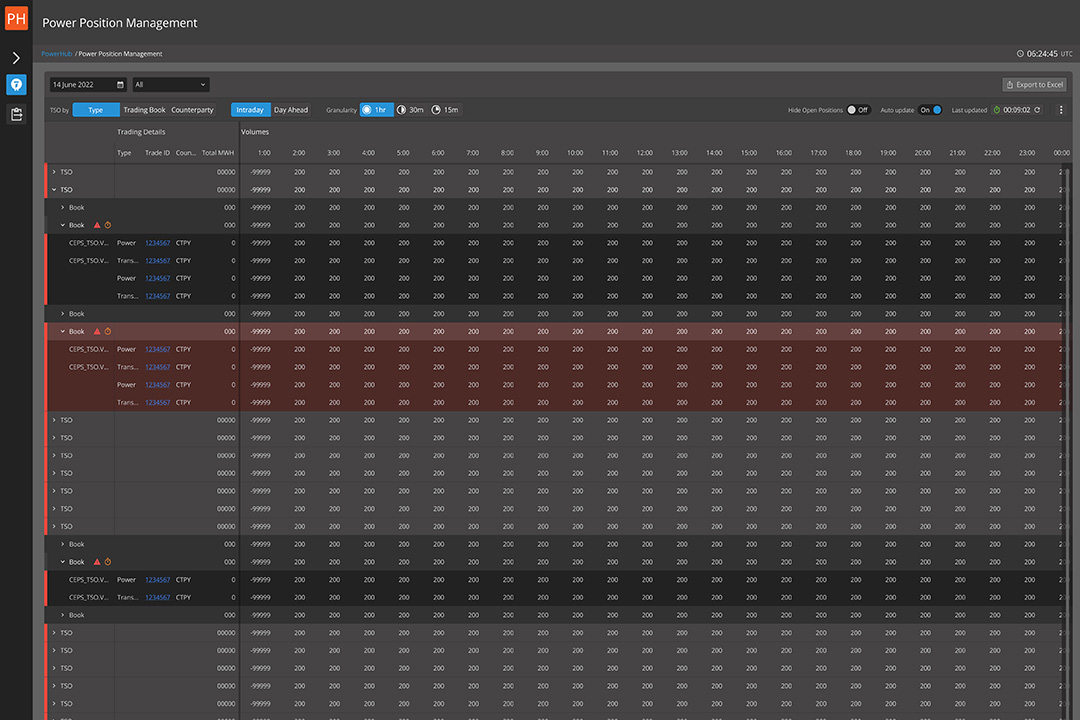
Consistent, Scalable UI Components
Challenge: Multiple modules (Positions, Nominations, Anomaly Tracker) needed to work together seamlessly while supporting future expansion.
Decision:
Build on a component library with Kendo
UI for a consistent visual language and faster delivery.
Why it matters:
Unifies experience across modules and reduces maintenance costs.
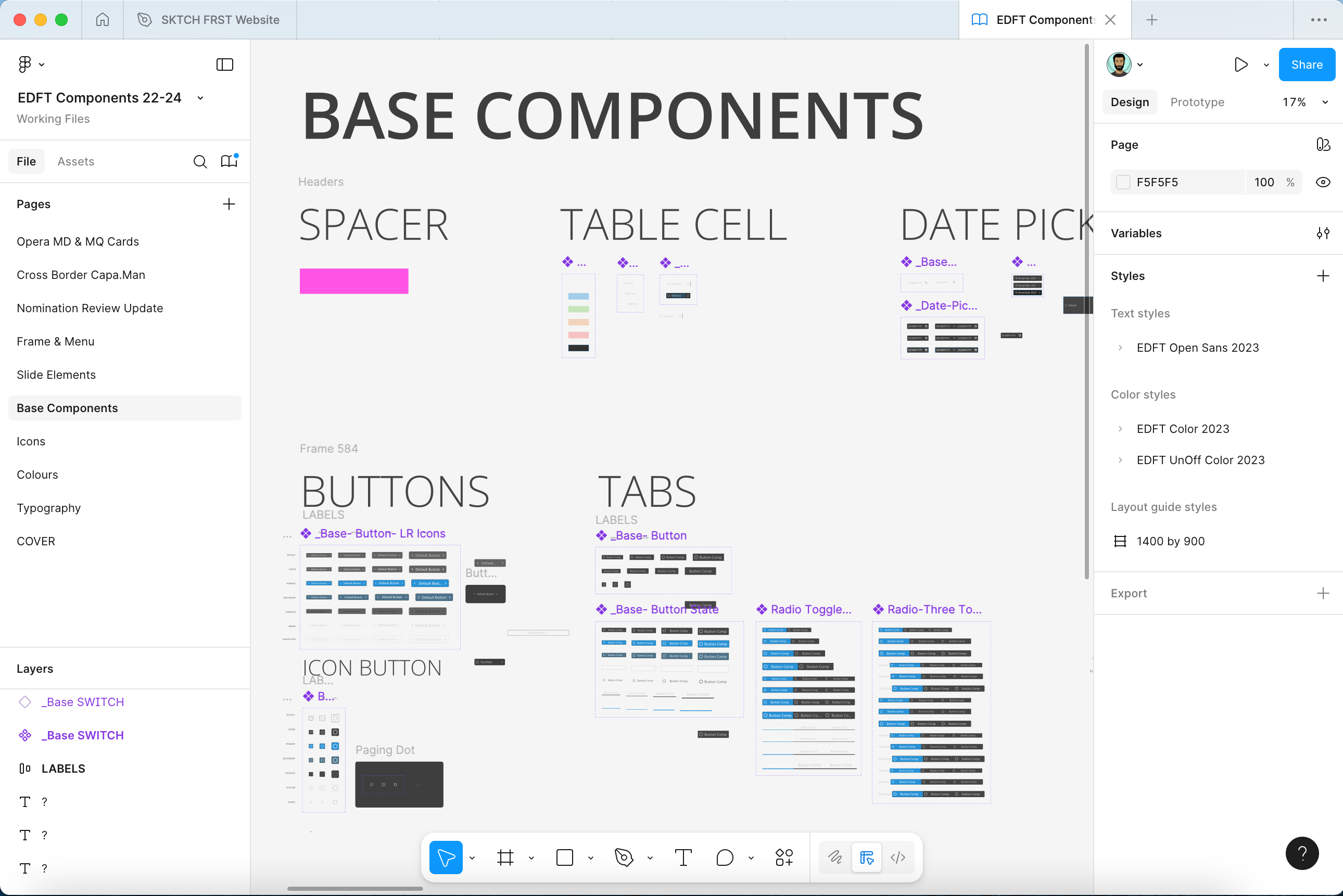
Prioritised Alerts to Prevent Fatigue
Challenge: Early prototypes flooded operators with dozens of real-time alerts, causing confusion and missed issues.
Decision:
Tiered alerting (Critical, Warning, Informational) with emphasis on the
three most urgent issues.
Why it matters:
Improves response time and reduces stress.
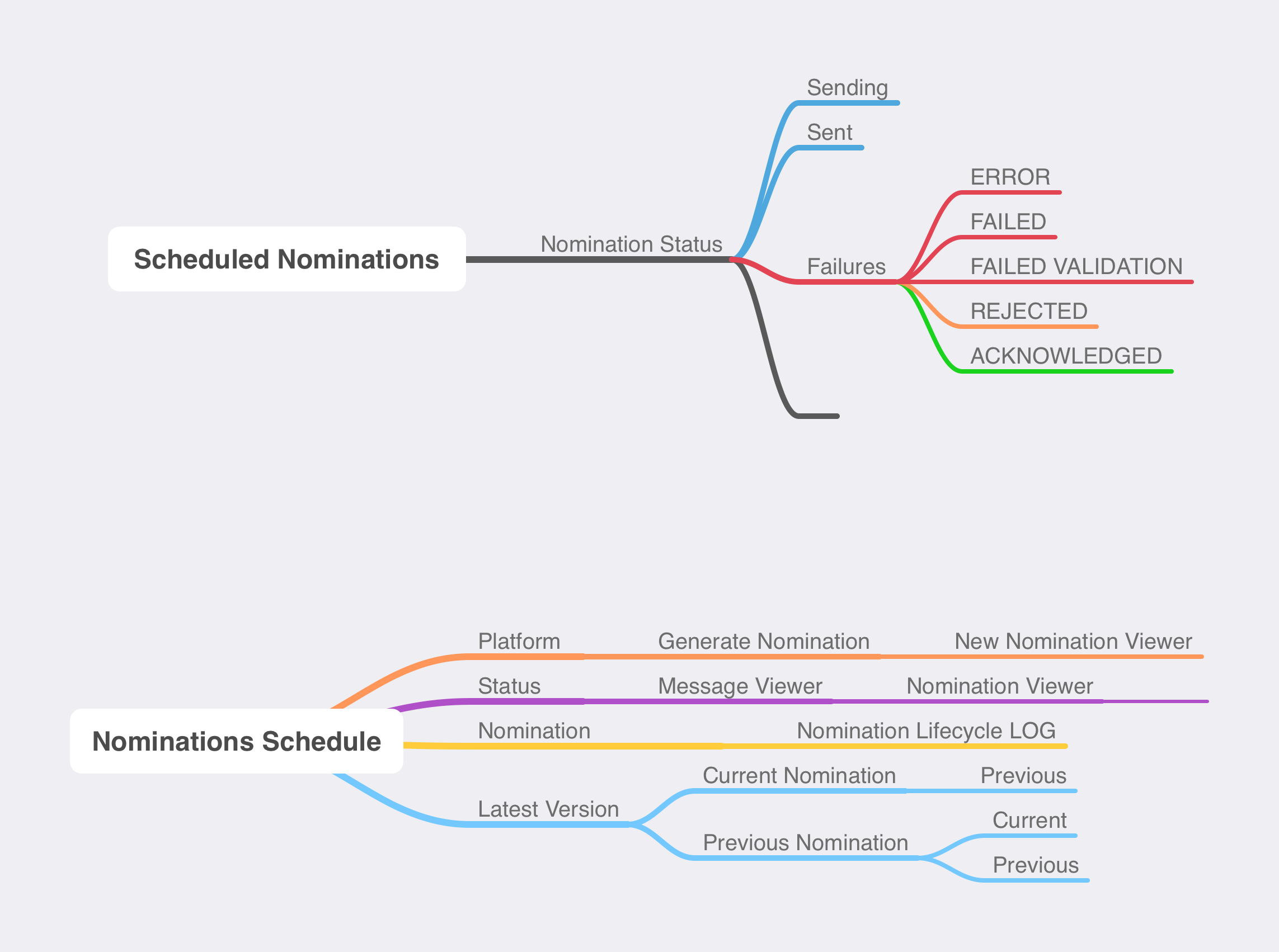
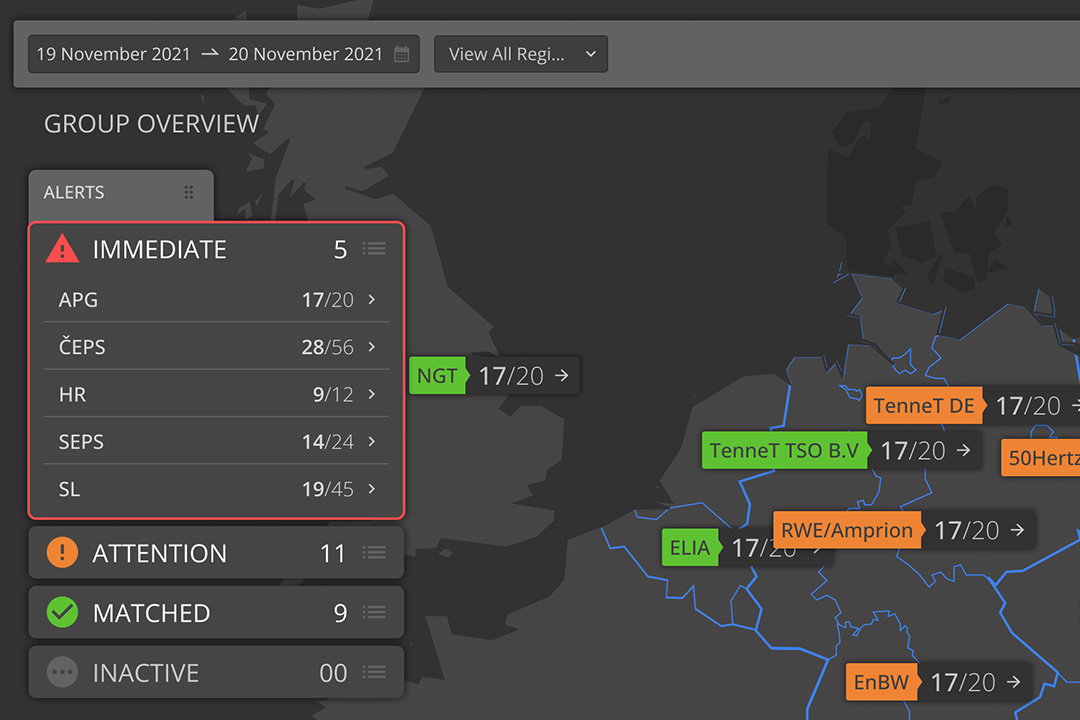
Visual Language for Rapid Recognition
Challenge: In a 24/7 trading environment, operators needed to identify issues at a glance, even during high-stress moments.
Decision:
Standardise colours, icons, and cues (e.g., red = critical, green = balanced, yellow = pending review).
Why it matters:
This improved speed of recognition and reduced cognitive load during decision-making.
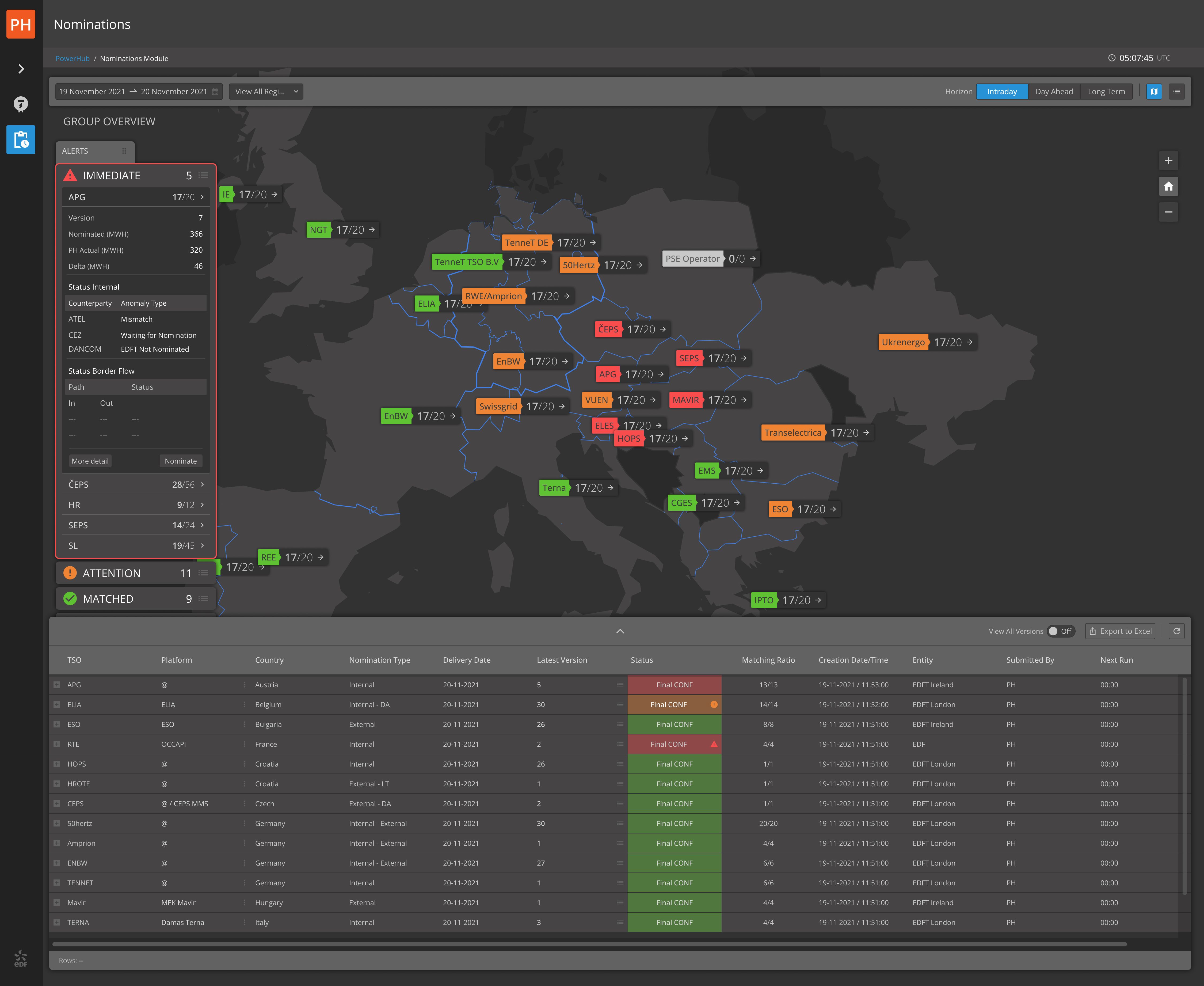
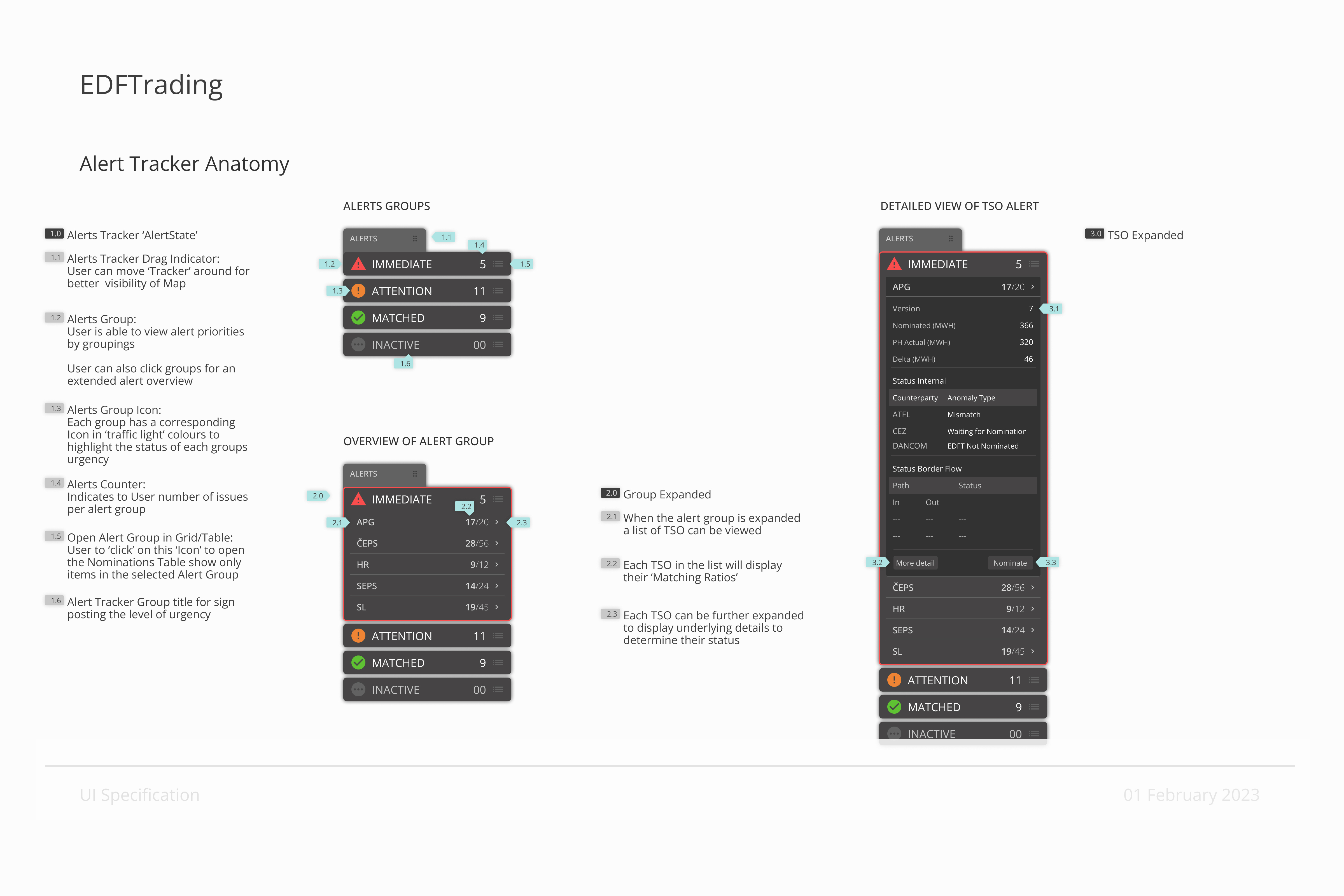
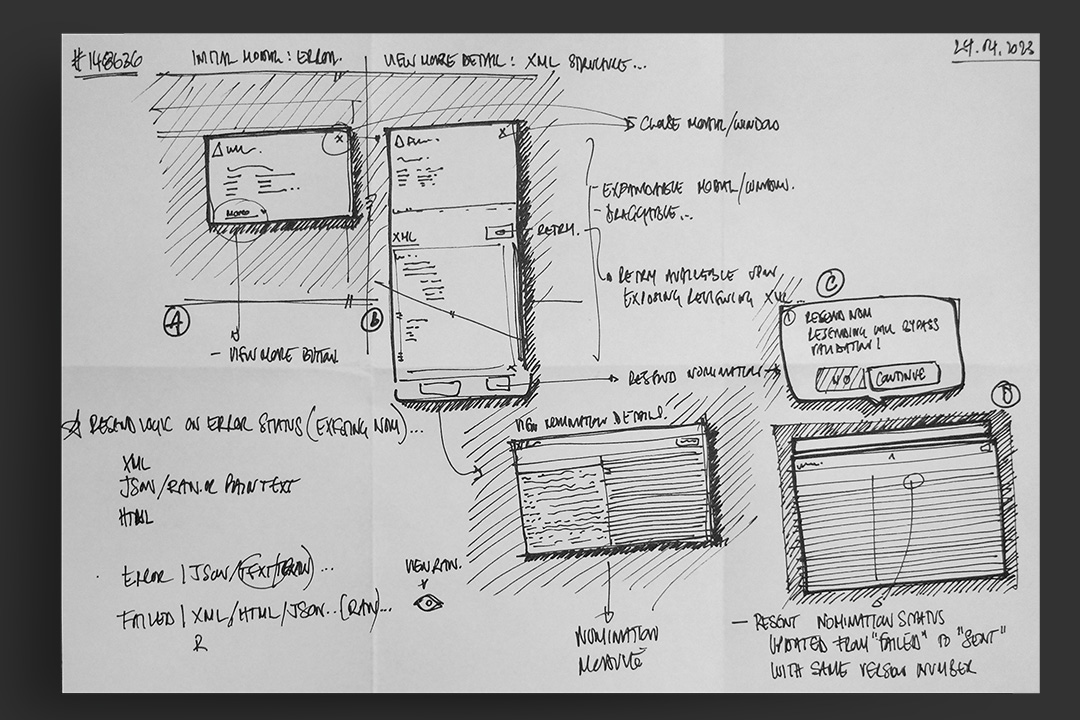
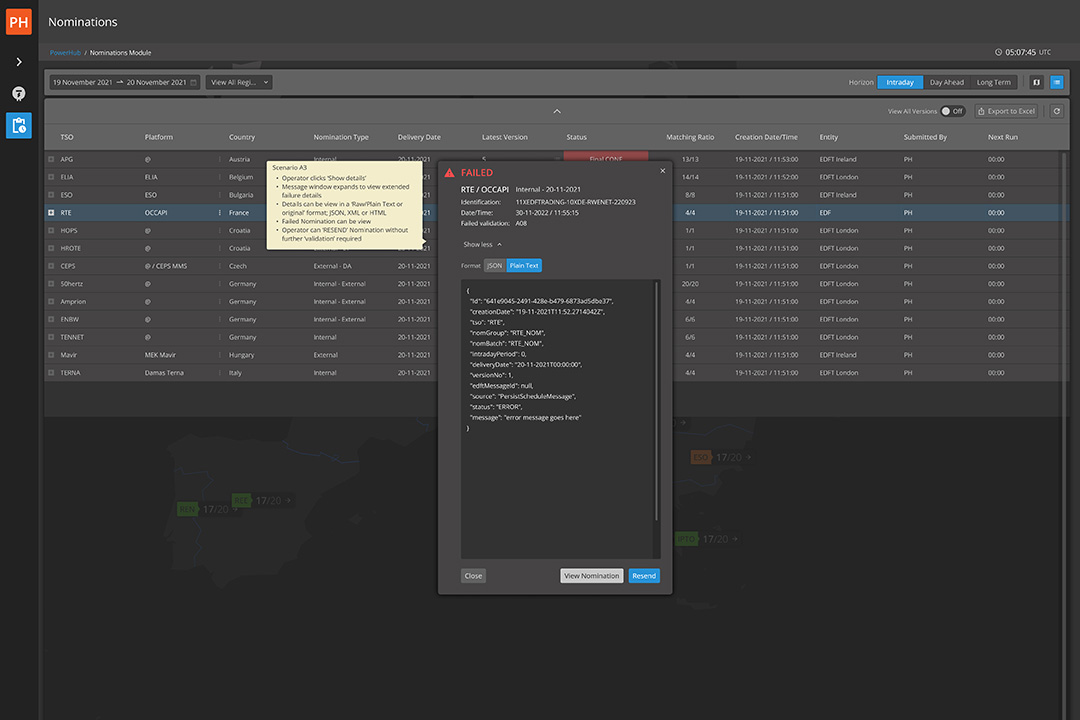
Managing the Human Side of Change
Power Position Management
We aimed to simplify and automate while improving daily experience for Supervisors, Operators, and Traders.
- • Co-designed workflows turned initial skepticism into active advocacy.
- • A phased rollout minimised disruption during critical trading periods.
- • Training and ongoing support helped build trust and smooth adoption.
This people-first approach ensured the transformation was embraced, not resisted.
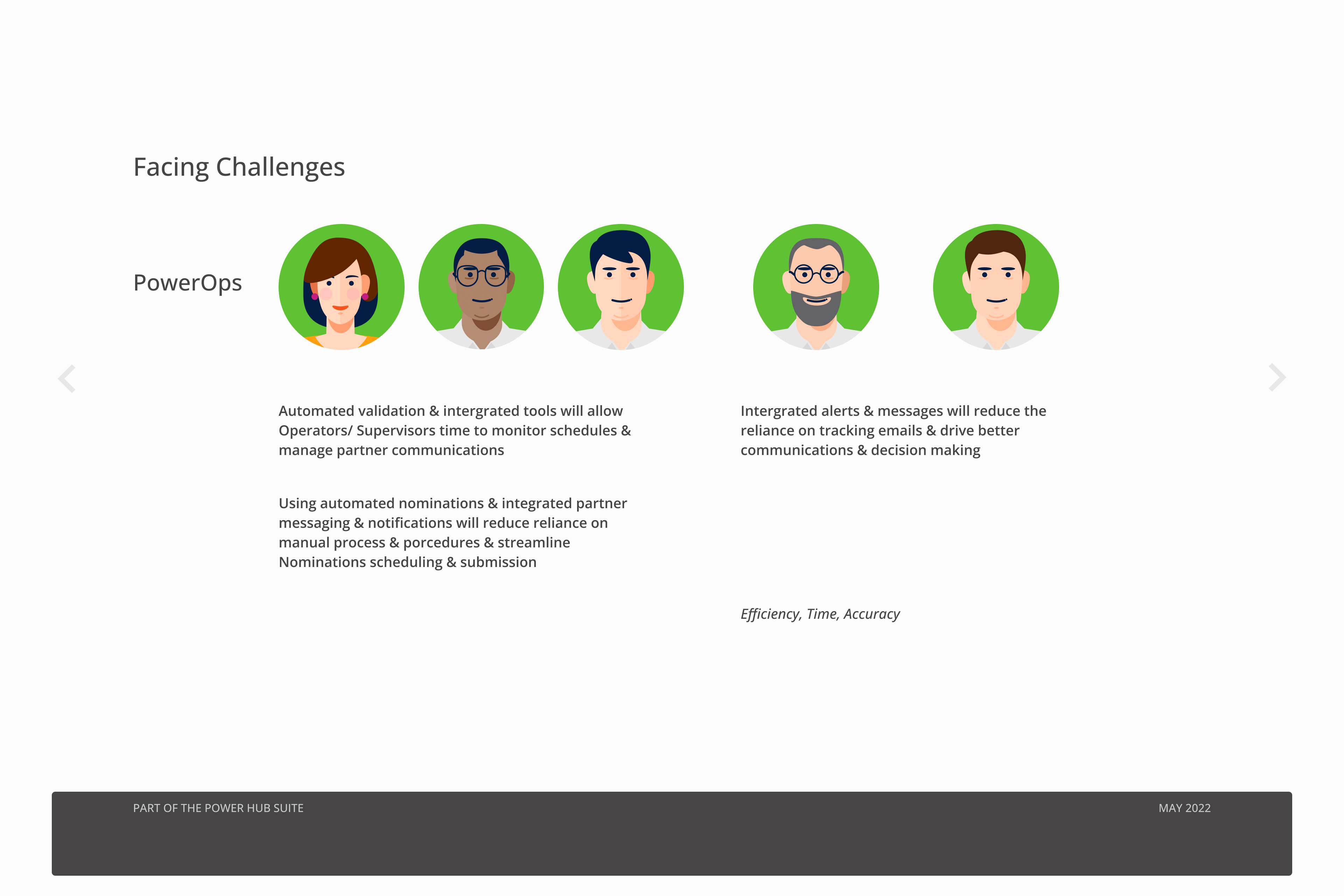
Metrics & Outcomes
Measurable Progress, Real Impact
We tracked outcomes using operational data and direct user feedback.
These results reflect genuine, measurable improvements in both efficiency and accuracy.
| Task | Before | After |
|---|---|---|
| Intraday balancing | ~4 hrs/operator/day | < 30 mins combined |
| Nomination processing | ~70% manual | > 75% automated |
| Batch submission time | ~12 minutes | ~2 minutes |
| Error rate | ~15% | < 3% (mostly external) |
Strategic Outcomes
Preparing for the Future
This transformation achieved more than operational efficiency. It positioned EDF Trading for future growth and regulatory changes.
- Regulatory readiness: Fully prepared for upcoming EU 15-minute granularity requirements.
- Legacy system retirement: Three outdated tools fully sunset, reducing complexity and maintenance overhead.
- Scalability: Platform designed to handle rising trading volumes as algorithmic and AI-driven strategies expand.
- Cultural shift: Teams moved from reactive firefighting to strategic, data-driven decision-making.
“We've gone from firefighting to forward planning. The platform doesn't just help us keep up — it lets us lead.” — Head of Power Operations
